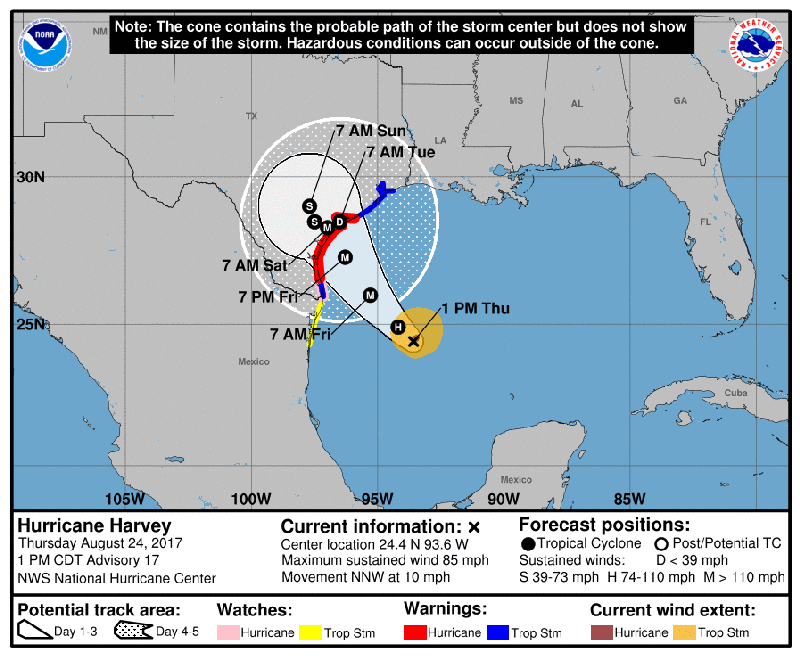A significant amount of uncertainty remains in Arkansas about the possible effects of a rapidly intensifying hurricane churning toward the Texas coastline, forecasters say.
Hurricane Harvey, classified as a tropical storm Thursday morning, had strengthened into a Category 1 storm around noon with maximum sustained winds that afternoon of 85 mph, according to the National Hurricane Center.
At midday, it was centered about 340 miles southeast of Corpus Christi, Texas, moving north-northwest at 10 mph.
Forecasters said "additional rapid strengthening is forecast," with Harvey expected to become a major hurricane by Friday before striking the middle Texas coastline.
The storm’s current track has it making landfall as a potentially devastating Category 3 hurricane near Corpus Christi by daybreak Saturday and then stalling out into central Texas.
[HURRICANE TRACKER: Follow Harvey’s path so far]
“I still think the jury is out on this one,” said North Little Rock meteorologist Dan Koch of the hurricane and its forecasted path.
Koch said varying, “erratic” computer models have made forecasting Harvey’s path more difficult.
Over the next seven days, portions of eastern and southeast Arkansas could see up to 4 inches, according to the latest advisory. Central Arkansas, meanwhile, is forecast to receive about 1 inch of rainfall.
The remainder of the state is expected to see up to half an inch of precipitation.
But, if the path veers further north and east, southern Arkansas could see more rainfall and the potential for significant flooding, Koch said.
Portions of south Texas are forecast to receive several inches of rainfall — some areas with up to about 30 inches. Areas along the state's coast already face hurricane and storm surge warnings, meaning a danger for "life-threatening inundation" is possible.
Harvey would be the first major hurricane to make landfall in Texas since Hurricane Ike in September 2008, The Associated Press reported. That storm brought winds of 110 mph to Galveston and Houston, leaving the area with $22 billion in damages.
Estimated winds upon landfall for Harvey are forecast to be around 125 mph, which would make it an upper-level Category 3 storm. The Category 4 threshold is 130 mph winds.
Koch advised Arkansas residents to heed the advice of local meteorologists and local officials if the state were to see a significant impact from Harvey.
"It's still kind of a best guess right now," Koch said, noting that conditions could change drastically within the next 24 to 48 hours.
Information for this article was contributed by The Associated Press.
